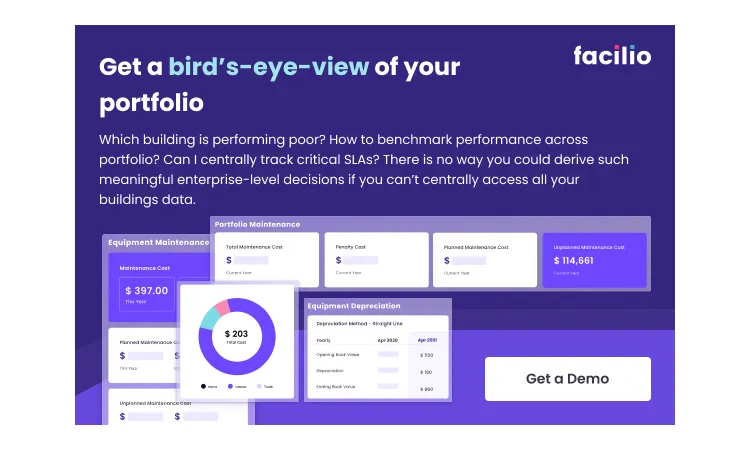Reducing Emergency Maintenance: A Step-by-Step Guide
Emergency maintenance is fixing or replacing a broken or faulty item in an urgent situation.
Its goal is to ensure that essential operations resume as quickly as possible without negatively impacting the safety or functioning of a building, system, or equipment.
One example of emergency maintenance is a power outage. Power outages have serious consequences, such as disrupting medical services.
As such, they must be addressed quickly and efficiently to minimize any negative impacts on the local area.
Emergency maintenance teams are dispatched to the site immediately to assess the situation, determine the cause of the outage, and implement a resolution as quickly as possible.
Other common examples of emergency maintenance include equipment failure or damage, natural disasters such as floods or fires, and system outages.
This article will discuss emergency maintenance, how it compares to other types of maintenance, and the key considerations when preparing for it.
We will also look at key strategies to minimize the need for emergency repairs.
Interesting read: A Quick Guide to Avoid Getting Pencil Whipped!
What is an emergency repair?
An emergency repair is an unplanned maintenance implemented in an urgent situation to address a broken or malfunctioning item.
The goal is to restore essential operations quickly and efficiently while minimizing safety risks and system downtime.
Many challenges are associated with emergency repairs, including reacting quickly and making decisions based on limited information.
However, with careful planning and preparation, it is possible to minimize the frequency and severity of these events.
Check out why O&M Manuals are important and how it helps facility upkeep!
Emergency maintenance vs. preventive maintenance
Emergency maintenance is fixing or replacing assets in an urgent situation, while preventive maintenance is regularly examining and maintaining equipment to keep it running efficiently and ensure that a problem does not occur.
A typical example that sheds light on the differences between emergency repairs and maintenance is the case of a flooded basement.
Emergency repairs, such as pumping water and repairing damaged equipment or walls, would be needed to address this situation. On the other hand, preventive maintenance involves installing sensors preemptively to check for leaks.
Read More: Preventive Maintenance Scheduling: A Simple Guide
Emergency maintenance vs. reactive maintenance
Emergency maintenance focuses on fixing equipment before it breaks down. Reactive maintenance is about repairing already broken assets.
While both are types of unplanned maintenance, they are very different in how they are approached.
Emergency maintenance aims to remove any health hazard or safety risk that could occur due to the equipment malfunctioning.
For example, a data center threatened by a flood could use emergency maintenance to relocate the data and prevent any damage.
The immediate objective of emergency maintenance is to fix the issue before any damage occurs.
Reactive maintenance, on the other hand, occurs when the malfunction has already happened.
Related article: LOTO Procedures: Why They Must be OSHA-compliant
Emergency maintenance vs. corrective maintenance
The main difference between emergency and corrective maintenance is the time frame in which the repairs need to happen.
Emergency maintenance is performed when equipment failures are imminent or are already taking place. In contrast, corrective maintenance seeks to fix equipment that is not working correctly but may not be at risk of breaking down soon.
For example, you might perform corrective maintenance on a boiler producing low-quality steam. At the same time, emergency repairs would be needed if the boiler were at risk of overheating or breaking down.s

Pros and cons of emergency maintenance
Emergencies are inevitable. While we hardly want to think about emergencies, emergency maintenance is still essential to maintaining and operating equipment safely.
There are a few pros of emergency maintenance:
It secures your safety and the safety of others: Emergency maintenance allows for quick response times to address urgent issues that may compromise security and performance.
It prevents further damage: Emergency maintenance is critical in preventing equipment failures or damage. For example, a sudden power surge may cause your entire IT system to go down. Emergency maintenance helps repair this issue before the hardware is permanently damaged.
It minimizes downtime: Emergency maintenance also allows you to keep operations running smoothly by preventing downtime or delays in production. For example, securing a damaged electrical motor before it fails can help minimize any disruption to your operations.
However, emergency maintenance is not without its downsides:
- First, it is unpredictable: Emergency maintenance is not planned and is often disruptive or inconvenient, causing scheduling conflicts, delays, and unplanned downtime.
- It causes stress to the equipment: Emergency maintenance often involves high levels of stress on the equipment being repaired, which can accelerate wear and tear and shorten the lifespan of the equipment.
- It's costly: Emergency maintenance comes with higher costs due to the need for quick response times. This may involve hiring expensive contractors or purchasing new parts or equipment to fix urgent issues.
Emergency maintenance workflow
A robust emergency maintenance workflow helps you navigate the unpredictable nature of emergencies and keep your equipment running smoothly.
Here's what it looks like:
- The emergency happens: It can be anything from a hardware failure to a power outage.
- Assess the situation: In this step, you will assess the severity of the emergency and whether it can be resolved quickly or requires more extensive repairs.
- Identify key personnel: Emergency maintenance may require calling in experts to help repair urgent issues. Identifying the right personnel ahead of time will help speed up response times when an emergency does occur.
- Prepare for downtime: Emergency maintenance often involves downtime or delays, so it's essential to have a backup plan to minimize disruptions to your operations. This may include having an alternate workspace ready, communicating updates to employees and clients, and ensuring critical systems are fully functional.
Schedule a call with us today and learn how you can avoid emergency maintenance.
Emergency maintenance examples
Emergency maintenance is critical to running operations smoothly in many industries.
Emergency maintenance can involve anything from hardware failure to power outages, and it's essential to have a streamlined workflow in place to ensure successful repairs and minimal downtime. Here are some examples of how various industries handle emergency maintenance:
- Hospitality: Emergency maintenance in the hospitality industry involves responding quickly to issues and avoiding customer discomfort. For example, a hotel's maintenance team may need to work overnight or on-call to address urgent issues like HVAC failures, stuck elevators, and plumbing problems.
- Manufacturing: Emergency maintenance in the manufacturing industry requires careful planning to minimize downtime and ensure safe and efficient operations. For example, a manufacturing plant may need to call in external experts or evacuate workers during an emergency like a chemical spill or electrical fire. By preparing for these situations in advance, a manufacturing company can ensure that its operations run smoothly even under challenging circumstances.
- Financial services: Emergency maintenance in the financial services industry involves working closely with clients and stakeholders to maintain trust and transparency during unexpected events. For example, an investment firm may need to issue regular updates about system outages or security breaches to maintain trust and build client relationships.
- Food processing: Emergency maintenance in the food processing industry can involve various challenges like equipment failures or contamination incidents. For example, a food processing plant may have a machine that filters out contaminants like glass or metal pieces from the final product at risk of breaking down. In these situations, it's crucial to have a robust emergency maintenance plan in place to ensure safe and reliable food production.
- Construction: Emergency maintenance in the construction industry is necessary to respond to unexpected issues like weather events or injuries. For example, a fire alarm may go off in a high-rise building under construction, or flooding from a storm may damage equipment or delay project timelines. By developing a detailed emergency response plan, construction companies can ensure they are prepared to respond quickly and effectively to any situation.
Every industry should have a well-developed emergency maintenance plan in place to ensure that unexpected events don't disrupt operations or jeopardize the safety of workers and customers.
A CMMS software allows companies to streamline their workflow and respond quickly to emergencies. Let's see how.
Learn more about what Maintenance KPIs are and why they are crucial to your organization!
Preventing emergency maintenance with a CMMS Solution
To avoid emergency maintenance, companies need a reliable and efficient system for handling unforeseen events.
A computerized maintenance management system (CMMS) is ideal for running operations smoothly, even under challenging circumstances.
A CMMS allows businesses to manage their equipment and resources effectively through a centralized digital platform.
With features like asset tracking, scheduling, and real-time communication with workers on-site, companies can manage their entire asset portfolio and address any issue.

It gives you a bird's eye view into the health and status of your entire equipment fleet, so you can quickly spot any issues that may require emergency maintenance.
And with proper prioritization and work order scheduling, you can ensure quick response times to minimize downtime and keep customers satisfied.
In addition, a CMMS gives users access to powerful analytics tools that help them make better decisions.
From predicting future maintenance needs to tracking asset utilization, these tools can help businesses keep their operations running smoothly and prevent unexpected emergencies from disrupting daily activities.
Moreover, a CMMS can integrate with existing business systems to add value across the organization.

For example, it can automate work order requests and notify users of maintenance tasks that need to be completed. By automating these processes, a CMMS prevents emergencies, helps reduce costs, and improves efficiency.



